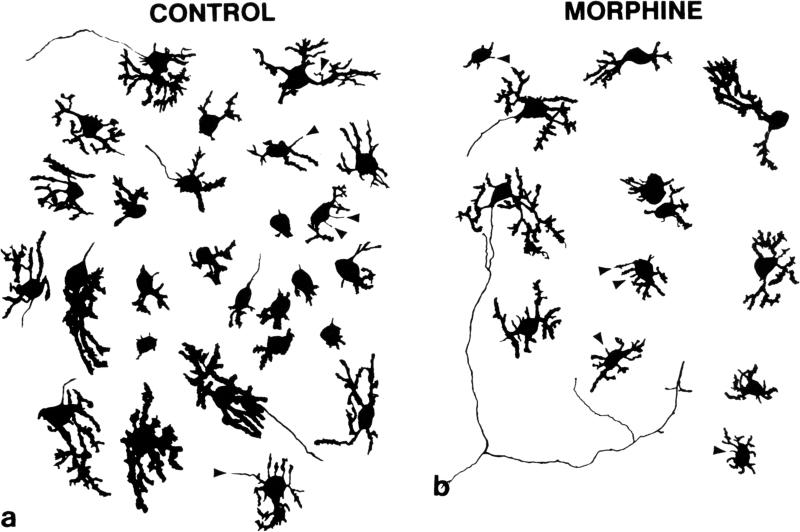FIG. 3.
Composite camera lucida drawings of calbindin-D28k-immunoreactive Purkinje cells illustrating the effects of high concentrations (10−5 M) of morphine on Purkinje cell numbers. Ccompared to untreated controls (a), continuous exposure to morphine (b) for 7 to 10 days in vitro caused concentration-dependent reductions in Purkinje cell numbers and dendritic length in cultures derived from 1-day-old mice (see Figs. 4 & 5). Numerous filopodial processes (arrowheads) were seen extending from the cell body or dendrites of calbindin-D28k-immunoreactive Purkinje cells. Filopodia are slender, thread-like processes of consistent diameter that transiently appear on growing neurons. Some filopodia terminate in a growth cones. (a & b) 320 ×.

